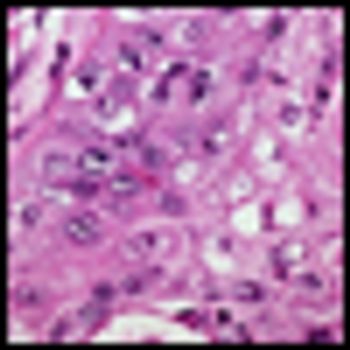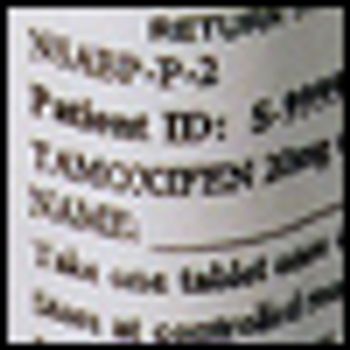
Scientists at UCLA’s Jonsson Comprehensive Cancer Center and the Eli and Edythe Broad Center of Regenerative Medicine and Stem Cell Research have identified that squamous cell carcinomas can originate from hair follicle stem cells.

Your AI-Trained Oncology Knowledge Connection!


Scientists at UCLA’s Jonsson Comprehensive Cancer Center and the Eli and Edythe Broad Center of Regenerative Medicine and Stem Cell Research have identified that squamous cell carcinomas can originate from hair follicle stem cells.

A basic science lab studying cell mobility pathways in mammalian development at the Fred Hutchinson Cancer Research Center has elucidated a mechanism by which cells migrate within the developing mammalian brain that adds to the current knowledge on the way other cell types travel within the body: The research may be relevant to understanding how cancer cells metastasize.

In a prospective study published online first on March 28, 2011 in the Journal of Clinical Oncology, researchers have shown, for the first time, that annual MRI screenings can reduce breast cancer-related mortality in women with a BRCA1 or BRCA2 mutation.

A blood test could soon be used to predict the risk of the spread of cancer among melanoma patients. The study identifying the potential test was published online on April 12th in Clinical Cancer Research, and AACR journal.

Accountable care organizations (ACOs) are legal entities that are responsible for the cost, quality, and care of a population of patients. ACOs are part of the Shared Savings Program of Medicare under the Affordable Care Act.

Erlotinib (Tarceva) has a low response rate in non–small cell lung cancer (NSCLC) but does improve survival in a subpopulation of patients harboring a wild-type (wt) epidermal growth factor receptor (EGFR) gene.

The question of whether men with low-risk prostate cancer should have their cancers vigilantly monitored is an ongoing issue for the National Comprehensive Cancer Network (NCCN) Panel on prostate cancer.

The US Food and Drug Administration approved the first treatment for a rare type of thyroid cancer on Friday April 6, 2011.

“Hallmarks of Cancer”, published in the journal Cell in 2000 provided a conceptual framework for the evolution of cancer as well as an all-encompassing review of the cancer field to date. The article is updated in the March 4th, 2011 issue of Cell.

A long-term and large-scale retrospective study of cancer patients who have undergone radiotherapy show that only a small portion of secondary cancers develop due to radiotherapy treatments.

Donald M. Berwick, the Director of Centers for Medicare and Medicaid Services (CMS) of the Health and Human Services Department as of March 2010, has written a perspective on the accountable care organizations (ACOs) of the Medicare Shares Savings Program.

The Centers for Medicare and Medicaid Services (CMS) say that the first-ever cancer vaccine, sipuleucel-T (Provenge) from Dendreon would be covered for FDA-approved usages of the treatment.

Women over 50 years old with early breast cancer confined to one breast who took 20 mg of tamoxifen daily for 5 years were less likely to relapse than those who took the drug for 2 years.

The Journal of Clinical Oncology published a paper ahead of print on March 21, 2011 that shows no increased risk of venous thromboembolisms (VTEs) when bevacizumab was added to chemotherapy compared to chemotherapy alone.

The National Comprehensive Cancer Network presented the first treatment algorithm for post-transplant lymphoproliferative disorder (PTLD) at the 16th annual NCCN's Conference on Clinical Practice Guidelines and Quality.

Researchers at the University of Milan sought to assess the clinical relevance of biopsying primary breast cancers and secondary metastatic liver lesions to evaluate the occurrence of important markers.

As we learn more about the network of cellular pathways that function in the proliferation of cancer cells, it is becoming abundantly clear that there is no “magic bullet” cancer treatment. Janet Woodcock highlights the goals and current developments at the FDA to progress the combination clinical trial process

The American Society of Clinical Oncology (ASCO) updated its recommendation last month on the role of bone-modifying agents in the prevention of skeletal-related events (SREs) for metastatic breast cancer patients with bone metastases.

A new study in the journal Cancer, published by the American Cancer Society concludes that tamoxifen can save lives and decrease medical costs when taken by menopausal women under 55 years of age as a preventive measure against breast cancer.

A first-in-class chemotherapy agent, eribulin, has shown that it significantly improved overall survival (OS) compared with treatment of physician’s choice (TPC) in women with metastatic breast cancer who have received at least two prior treatments.

More than 30 states are now either pursuing or contemplating legislation that will increase healthcare cost transparencies, and three bills relating to cost transparencies were introduced in Congress in 2010. Unfortunately, research on the effects of price transparency on healthcare systems is in its infancy, and little information is available for states to make these important legislative decisions.

A model example of personalized cancer therapy that has demonstrated improved patient outcomes is the use of anti-HER2 treatment. Breast cancer patients screened via molecular diagnostics and identified as having amplification of the HER2 gene generally have a poorer prognosis, but show better responses to anti-HER2 treatment.

Axillary lymph node dissections (ALND) remain the standard of care for breast cancer patients that have sentinel lymph node metastases. However, the procedure carries the risk of serious complications such as infection, lymphedema, and seroma.

Results of a 4-year follow-up of patients on the Herceptin Adjuvant (HERA) trial have been published in March edition of Lancet Oncology.

After the initial excitement over the potential of RNAi to target any cancer gene, the field is now being viewed with caution and a bit of skepticism. Delivery system issues need to be solved and substantial clinical data of patient responses from early-stage trials need to be shown for the field to look promising.

A meta-analysis study of 3784 clinical trial patients from five clinical trials taking bevacizumab for breast cancer published in the Journal of Clinical Oncology has found that although the incidence for significant heart failure is low, patients have an increased risk of developing significant heart failure.

For the first time, a series of metastatic melanoma (MM) patients have been genetically tested for the constitutively activating BRAF mutation and assessed for its prognostic significance as is routinely done for breast cancer (HER2) and chronic myeloid leukemia (ABL).

Pfizer’s crizotinib, an oral, selective, small-molecule inhibitor for non-small cell lung cancer (NSCLC) has gone remarkably fast from lab bench to late-stage trials and now to the FDA for review.

The draft human genome sequence was published in February 2001 and in 2011, scientists and clinicians are reflecting on the path that genomics has taken us and the paths we should be taking next.

The use of oral bisphosphonates, typically used to treat osteoporosis and bone metastases in breast cancer, has recently been found to reduce breast cancer risk.